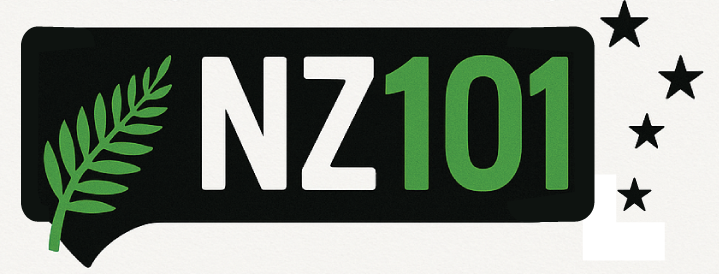Today (15 June) is Global Wind Day, so I thought it was a good time to talk about anything and everything related to wind in New Zealand.
You may wonder how I’m going to fill an entire post just talking about the wind in New Zealand.
Easy! It’s a windy country, so plenty to say.
But first things first.
What’s Global Wind Day?
Global Wind Day is a worldwide event that raises awareness about the potential of wind energy as a renewable energy source and the good it can do for the planet.
While events and activities are being organised worldwide, New Zealand doesn’t seem to have read the memo.
To our credit, though, a major wind energy event is coming up later this year: the 2025 New Zealand Wind Energy Summit (26–28 August).
The theme is ‘Energy Security: The Power of Diversification’, highlighting the crucial role wind energy plays in securing our power supply.
How Windy Is New Zealand?
In short? Windy!
Well, not everywhere and not all the time.
Of course, Wellington tops the chart. Check out the stats. There’s no competing with the capital when it comes to wind.

Why is New Zealand So Windy?
Roaring Forties
According to NIWA, the National Institute of Water and Atmospheric Research, New Zealand sits within the Roaring Forties, a zone of strong westerly winds in the Southern Hemisphere.
That’s why the prevailing wind direction is from west to east. These winds usually carry a lot of moisture too, which explains why the west coast gets more rain than the east.
Topography
The Southern Alps, a mountain range stretching along both main islands, significantly impacts wind patterns.
They funnel winds, causing them to increase in speed, especially through Cook Strait, which separates the North and South Islands.
Windy Wellington
Back to Wellington.
We call it Windy Wellington, for obvious reasons.

Flying into the capital is not for the faint-hearted, especially if you’re on a small plane.
Check this out:
But for Wellingtonians, wind is part of the lifestyle. Some even love the wind. They’ve learned to accept, adapt and occasionally get nudged half a metre sideways by a rogue gust.
You know you’re in Wellington when a wheelie bin overtakes your car 😊 And there’s a saying, ‘You can’t beat Wellington on a beautiful day.’
Not too sure if I agree.
When I first arrived in New Zealand, that’s where I landed. After three weeks, I decided it wasn’t for me. I’ve been back a few times since, and I still haven’t changed my mind.
That said, I have friends in Wellington who love it and have no plans of leaving.
Why Is Wellington So Windy?
Still not convinced? Te Ara, the national encyclopedia, even has a page on it. Check it out: Windy Wellington.
The main reason is geography. Wellington sits right next to Cook Strait, the narrow gap between the North and South Islands.
As wind is funnelled through the strait, it gets stronger, especially on the northern side. In other words: Wellington.
The effect is amplified by the surrounding hills and the city’s exposure to the westerly winds.
Other Windy Spots
Palmerston North
Palmerston North may not get much attention in the press, but when it comes to wind, it’s a star player.
It is home to the Tararua Wind Farm, the largest by capacity in the country, producing 563 gigawatt-hours (GWh) of electricity annually.
The Cook Strait
The Cook Strait is one of the windiest marine areas in the world. Great for turbines. Rough for ferry passengers.
Extreme Winds
We don’t get the severe tornadoes experienced in the US, but from time to time, New Zealand gets hit by ex-tropical cyclones that can cause devastating damage.
Here are some of the worst storms in living memory:
- Ex-cyclone Bola (March 1988): severe damage and flooding in the North Island.
- Ex-tropical cyclone Giselle (April 1968): 53 people lost their lives when the Wahine ferry sank in Wellington harbour.
- Cyclone Gabrielle (February 2023): the deadliest storm since Giselle and Bola. Twelve lives lost, with total damage estimated at NZ$14.5 billion. You may want to read Weekly Whirl #4, where I mention how Hastings honoured local hero Phil Bayens, who saved 100+ lives during this devastating cyclone.
Wind Energy In New Zealand: Small But Mighty
With all that wind, it’s no surprise that New Zealand’s wind farms are among the most productive in the world.
A few quick stats:
- New Zealand currently has 664 wind turbines, most of which are located in the North Island.
- According to the Energy Efficiency & Conservation Authority, just over 6% of New Zealand’s electricity is generated from wind. It might not sound huge, but it’s significant and growing steadily.
The New Zealand Wind Energy Association states that the goal is to double electricity generated from renewable (wind and solar) resources by 2050, with wind expected to contribute at least 20% of the total annual generation by 2035.
Wind energy is cheap, reliable and unlike water in dry years, never runs out. In Wellington, that’s almost a guarantee.
The Lighter Side Of The Breeze
That’s probably enough wind for one a day.
Sure, wind can ruin your picnic, but it dries the washing in a heartbeat and quietly powers homes and heats water.
So this Global Wind Day, spare a thought for the engineers who keep the turbines spinning and the Wellingtonians who’ve long given up styling their hair.


